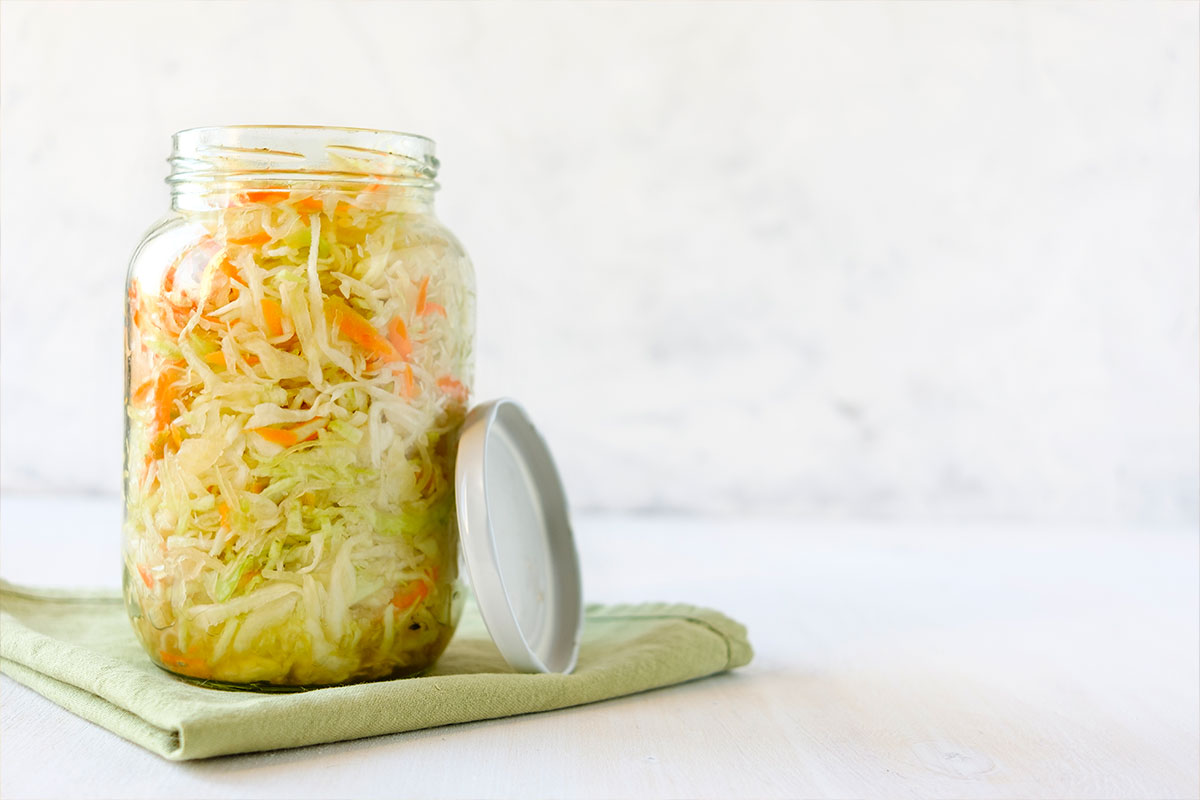Sauerkraut is a simple and inexpensive ingredient that can add a special taste and crunch to many dishes. It has a crisp texture and a tangy-sour flavor that goes well with various foods like sausages, sandwiches, and salads. Because it’s fermented, sauerkraut lasts a long time if stored correctly, making it a handy and budget-friendly choice for enhancing meals. You can also enjoy sauerkraut without cooking it, making it a quick and healthy way to add flavor and nutrition to your food.
Ingredients
- Cabbage – Select fresh cabbage from a local farm or grow it at home. You can make sauerkraut with different types of cabbage, like green, white, or red cabbage.
- Salt to make the brine for fermenting. You will need the right amount of salt for allow the fermentation to happen. Choose good quality salt but avoid iodized salt because it can stop the right bacteria from growing.
- Water for the brine
- Top of Form
- Bottom of Form
Equipment
- 1 quart (32 ounce) Glass jar with an extra lid
- Water canner
Directions
- Wash the cabbage, remove the outer leaves
- Shred the cabbage by hand with a box grater or a food processor
- Pack the cabbage into the glass jar, or jars leaving 1/2” from the top
- Add 1 tsp of salt per quart (per jar) of shredded cabbage
- Fill with boiling water 1 inch from top
- Place lid on the jar and tighten to soft resistance
- Place on counter 3-4 weeks. Leave the cabbage at room temperature in a cool place as it ferments. Be sure to keep the jar away from sunlight or warm areas. Check the sauerkraut every few days to make sure it stays covered in water. At first, you’ll see bubbles, which means bacteria are there, creating the good bacteria that are associated with fermented foods. Fermentation happens when these good bacteria flourish and eat the natural sugars in the cabbage.
- After 4 weeks, remove lid and replace it with a new lid and tighten.
- Water bath just to seal in boiling water canner
Some Tips
- Keep things clean. When fermenting cabbage or any food, use clean tools. Your hands are important, so wash them well and often.
- Keep air out. Make sure the cabbage is fully underwater to avoid introducing air or oxygen. Fermentation needs an oxygen-free environment for the bacteria to do their work.
The health benefits of sauerkraut
Sauerkraut is really good for you! It’s packed with loads of vitamins and minerals. The fermentation process makes its nutrients easier for your body to use. Sauerkraut is also high in fiber, and along with the good bacteria, microbes, and enzymes, they work together to improve digestion and keep your gut healthy.
Enjoying sauerkraut with your meals is a tasty way to keep your body in good shape. Here are some ways to enjoy sauerkraut
- Condiment: Serve sauerkraut with hot dogs, bratwurst, sandwiches, or burgers. It adds a crunchy texture and a unique flavor.
- Salads: Sauerkraut pairs well with ingredients like apples, carrots, and nuts.
- Stir-Fries: Add sauerkraut to stir-fries for a burst of flavor. It works particularly well with pork, and chicken.
- Sauerkraut Soup: Make a hearty soup by adding sauerkraut to a base of broth, vegetables, and meat.
- Casseroles: Include sauerkraut in casseroles for a unique twist. It goes well with ingredients like potatoes, sausage, and cheese.
- Sausage and Sauerkraut: Create a classic dish by cooking sausages with sauerkraut. The flavors complement each other well.
- Grilled Cheese: Add sauerkraut to a grilled cheese sandwich for a zesty kick, especially with Swiss or Gruyere cheese.
- Potato Dishes: Mix sauerkraut into mashed potatoes or baked potato dishes. Remember that sauerkraut has a distinct tangy and sour taste due to the fermentation process, so it may not appeal to everyone’s palate. Experiment with different recipes to find the combinations that suit your taste preferences.
Want more recipes for Pantry Items you can make at home?
